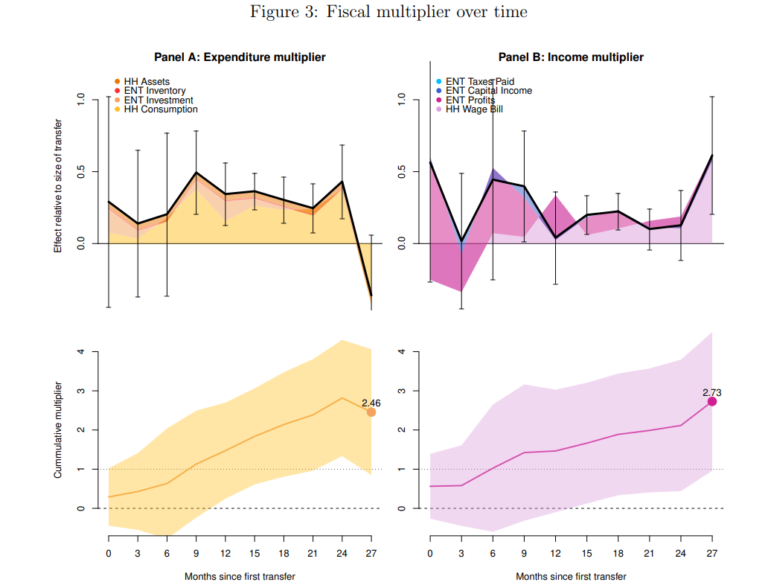Multiplier Effects: How US$1,000 Cash Transfers benefited Kenya’s poor
Charity GiveDirectly gave US$1,000 each to poor households across Siaya County, Kenya where thousands of people live below the government’s rural poverty line of less than US$15 a month, reports the World Economic Forum.
“We believe people living in poverty deserve the dignity to choose for themselves how to best improve their lives – cashMoney in physical form such as banknotes and coins. More enables that choice.” GiveDirectly is the first and largest nonprofit that allows donors to send moneyFrom the Latin word moneta, nickname that was given by Romans to the goddess Juno because there was a minting workshop next to her temple. Money is any item that is generally accepted as payment for goods and services and repayment of debts, such as taxes, in a particular region, country or socio-economic context. Its onset dates back to the origins of humanity and its physical representation has taken on very varied forms until the appearance of metal coins. The banknote, a typical representati... More directly to people from the world’s poorest areas.
A team of researchers partnered with GiveDirectly to find out the impact cash transfers bring to the local economy. Looking at the bigger picture, cash transfers not only affected the recipient, but the money had a ripple effect on the region’s economy.
Multiplier Effects
A total of US$10 million were handed out to 328 villages where each of 10,500 households that qualified – by having a thatched-roof home – received $1,000, paid in three transfers. As a result, the total paid out amounted to around 75% of mean annual household expenditure in the region.
A total of 653 villages were analysed by economists coming from Berkley, Princeton and the University of California in San Diego who carried out monthly surveys over the duration of 2.5 years, focusing on 61 local markets. Their findings concluded that for every US$1 cash delivered, an amount of US$2.60 was generated in additional spending or income in the area.
Passive Recipients to Active Consumers
According to the Overseas Development Institute, most humanitarian cash transfer multiplier effects range from 1.5 to 2.5, meaning that an injection of $1 million of cash would generate additional income of $1.5 million to $2.5 million for the national and local economy.
Early this year, CashEssentials launched Cash and Crises, a series of financial literacy audiographics with a social mission to support the relief and development community in understanding how cash is managed for society in times of crisis.
Episode three, entitled ‘Multiplier Effects ’, explains how cash transfers create economic value beyond the face valueThe figure or amount written on the banknote or coin which indicates the amount of its economic value. It is usually written in letters and numbers. More of the original input as cash recirculates through the local economy. Moreover, this transforms passive recipients into active consumers.
Read the complete study by GiveDirectly below:
General equilibrium effects of cash transfers: experimental evidence from Kenya
